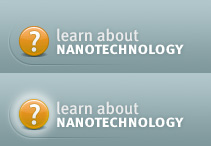Looking Back on the First Two Years
Biennial Report
Project on Emerging Nanotechnologies
Prospects for the future of nanotechnology can boggle the mind, with anticipated benefits and risks potentially impacting numerous sectors of the economy and many aspects of society. It is estimated that governments, corporations, and venture capitalists spent $12 billion worldwide on nanotechnology research and development in 2006. At an increasing clip, businesses are translating this research into the first generation of nanotech products. Entries in our Consumer Products Inventory have more than doubled from 2006 and 2007, to more than 500 products from companies in 20 countries. However, the most exciting—and, potentially, the most economically and socially valuable—applications lie farther out on the horizon.
Success in realizing the diverse anticipated benefits of nanotechnology—literally, from cures for cancer to cheap, clean energy—is not assured. For nanotechnology to flourish, the United States must develop the risk management tools and oversight approaches that enable responsible development, encourage commercialization, and earn the trust of consumers worldwide. In nanotechnology, we find an unprecedented opportunity to do things differently, to develop a social contract between the public and the scientific community that is built on openness and trust. This is a policy and leadership challenge of utmost importance.
Since the Project on Emerging Nanotechnologies began in April 2005, we have become one of the most widely recognized national and international forums for raising and addressing scientific, policy, and foresight issues spawned by this fast emerging and diversifying area of technology. Our partnership with the Wilson Center and The Pew Charitable Trusts has been an inclusive undertaking, engaging government, business, nongovernmental organizations, and the public in a constructive policy debate over safe and sustainable nanotechnologies.
This report reviews the Project’s major activities, key contributions, and most significant impacts over its first two years. Our primary goal has been to facilitate dialogue, cooperation, and sound decision-making in a complex and fast-changing technological landscape. Nanotechnology has the potential to deliver wave after wave of opportunity for much of this new century. However, policy and organizational decisions made in both the public and private sectors over the next several years will largely set the course for nanotechnology commercialization. These will determine how wisely and how fully our nation, our world, and our planet will realize nanotechnology’s enormous promise and how successfully we will minimize its risks and avert unintended negative consequences.
David Rejeski - December 2007
January 4, 2008




